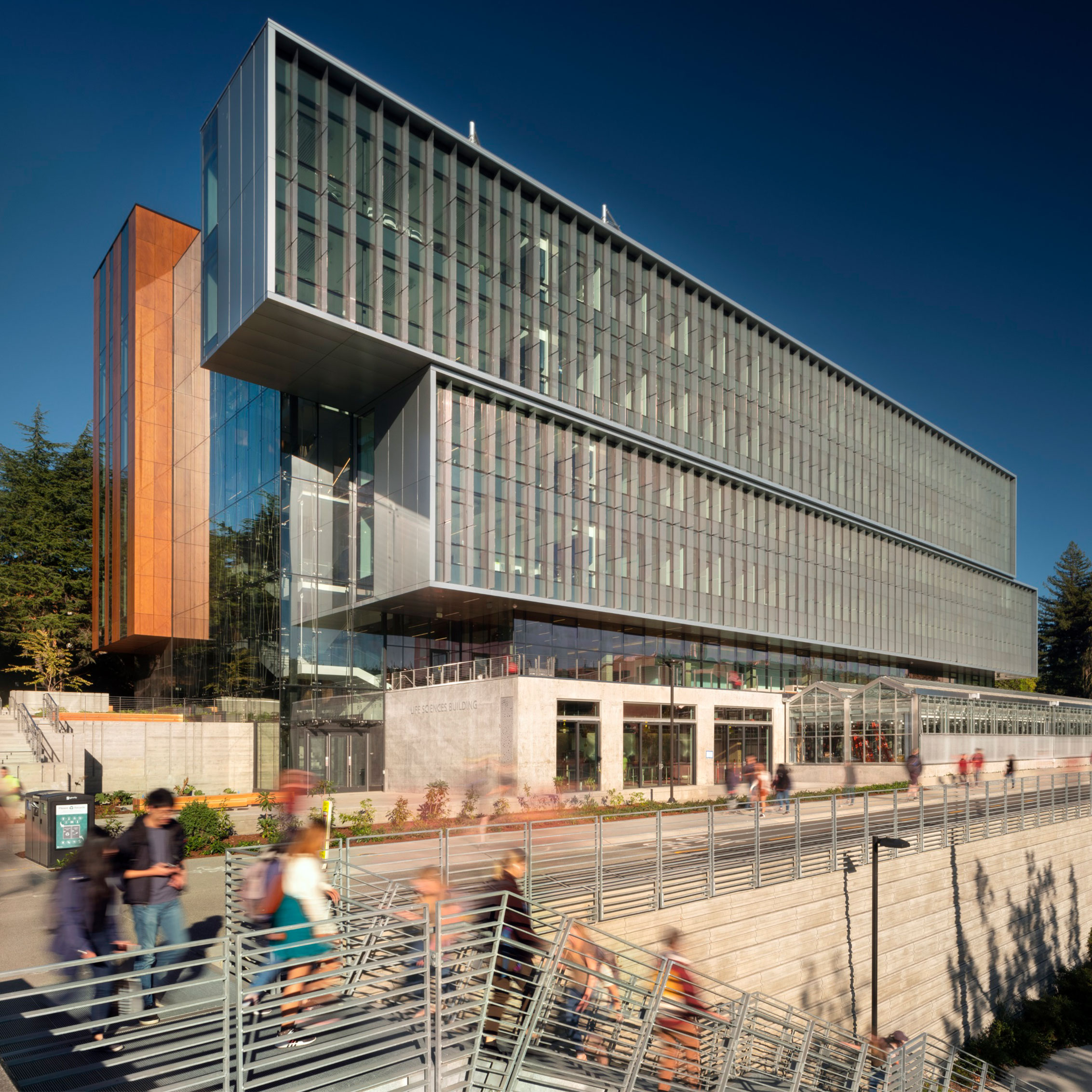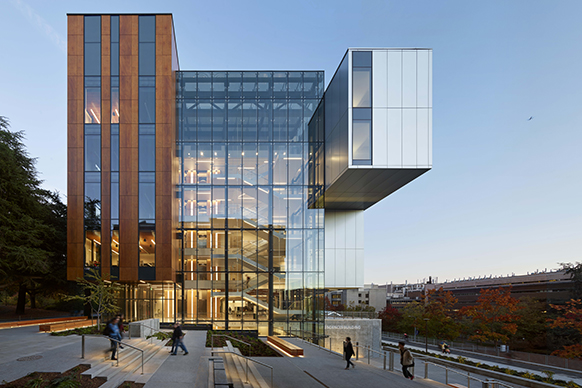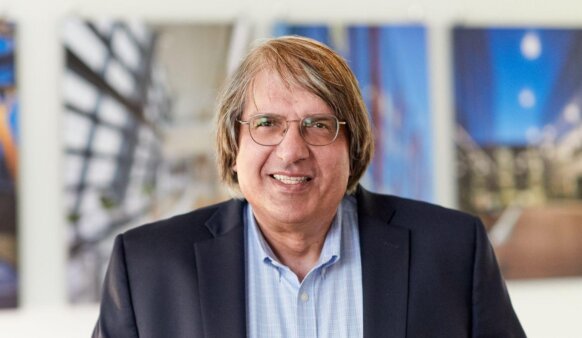The University of Washington recently opened the new gateway to the life sciences on its Seattle campus with a state-of-the-art building created for the next generation of research, teaching and public outreach. Designed by global architecture and design firm Perkins&Will, the highly innovative and sustainable Life Sciences Building (LSB), including a 20,000 square-foot greenhouse, creates a new centerpiece for UW Biology. Home to the largest undergraduate major on campus, UW Biology educates more STEM (science, technology, education, math) students than any other program in the state.
“Perkins&Will’s design of the Life Sciences Building will help us achieve our vision for the future of biology at the UW,” said Steve Majeski, associate dean with the College of Arts and Sciences at the UW. “Much more than a building, the LSB provides the facilities and structure to enable innovative and collaborative cutting-edge research and act as a hub for student discovery, transforming the way we teach the next generation of scientists with spaces for collaboration among students, faculty and staff.”
Designed for team-focused collaboration, offices, laboratories and common-use spaces are placed in close proximity to each other. Open, modular and flexible research and teaching areas are designed to be able to adapt to emerging research questions that require novel methods and new instruments. To encourage impromptu encounters, the interior features a suspended staircase with oversized landing areas; the exterior features a courtyard with cascading stairs and reclaimed wood benches along with a rooftop deck with seating adjacent to a cafe.
“Biology takes an integrative approach to understanding the natural world,” said Devin Kleiner, project architect and senior associate with Perkins&Will. “Inspired by that philosophy, the design combines elements of nature as the visual focal points with innovative and sustainable design features.”
One of the design’s most unique elements is the elevator core, wrapped in custom-milled slabs from 200-foot Douglas fir trees. Designed to mimic the way the trees appeared in the woods, the wide base of the trees on the first floor progressively narrows and tapers as it rises to the floors above. The nine trees from a forest in the Olympic Peninsula were donated by Leopold-Freeman Forests, LLC, as part of Scott and Susan Freeman’s watershed restoration efforts described in the book Saving Tarboo Creek.
Tracking to LEED Gold, the building’s highly innovative sustainable design was a result of a unique collaboration between designers and students from UW Solar, who helped analyze features, write grants, and give presentations. LSB boasts the first-of-its-kind installation of vertical glass solar fins on its exterior, one that is anticipated to generate enough electricity to light more than 12,400 square feet of offices throughout the year. Other sustainable features include operable windows for natural ventilation cooling, chilled beams and waves, a water reclamation system for greenhouse irrigation, radiant floors and rooftop solar panels. Students and visitors can learn about the research conducted within the building as well as real-time information about the building’s energy and water usage from a touchscreen dashboard on the first floor.
In close proximity to the city’s largest commuter trail, the Burke Gilman, LSB offers a range of public amenities, including eventual access to the greenhouse with 3,400 species of plants, the largest teaching collection in the state; a 90-foot-long art wall by Seattle artist Claude Zervas; public bike racks, a café and indoor/outdoor seating.
The 207,000-square-foot building and greenhouse is located between Northeast Pacific Street and Stevens Way, just east of Kincaid Hall on the UW’s main campus.




